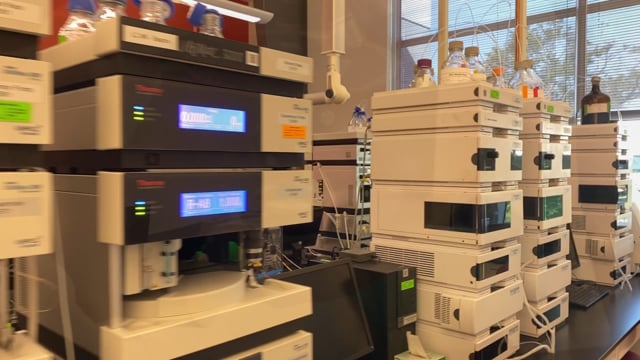Innovative Techniques for Evaluating Topical Formulations: Advancements in Drug Product Testing
As the pharmaceutical industry continues to evolve and grow, the demand for innovative and effective topical formulations is also on the rise. Topical products, which are applied directly to the skin or mucous membranes, offer a convenient and non-invasive way of delivering medication. However, with this convenience comes a need for strict evaluation and testing to ensure safety and efficacy.
In recent years, advancements in technology have led to new techniques and methods for evaluating topical formulations. This has provided pharmaceutical companies with more options when it comes to drug product testing. In this article, we will explore some of these innovative techniques and how they are revolutionizing the process of developing topical products.
Advances in Analytical Testing
Analytical testing plays a crucial role in evaluating topical formulations as it helps determine the quality, purity, potency, and stability of a drug product. Traditionally, analytical testing involved manual methods such as high-performance liquid chromatography (HPLC) or gas chromatography (GC). While these methods are still widely used today, they have their limitations when it comes to analyzing complex mixtures found in many topical formulations.
However, with advances in technology, newer techniques such as mass spectrometry (MS) have emerged. MS offers a more sensitive and selective approach to analytical testing by identifying individual compounds within a sample. This has proven especially useful for detecting impurities or contaminants that may be present in a formulation.
Furthermore, MS allows for faster analysis times compared to traditional methods. This not only increases efficiency but also reduces costs associated with drug development by minimizing resource allocation towards time-consuming tests.
Utilizing Imaging Techniques
Another exciting development in drug product testing is the use of imaging techniques such as confocal microscopy and Raman spectroscopy. These techniques provide a non-invasive way of visualizing the distribution of a drug within a topical formulation. By understanding how a drug is dispersed, pharmaceutical companies can optimize their formulations for better performance.
For instance, confocal microscopy allows for the visualization of the depth at which a drug penetrates the skin. This information can be used to adjust formulation components, such as penetration enhancers, to improve drug delivery. Raman spectroscopy, on the other hand, provides insight into the chemical composition of a formulation and how it changes over time. This is especially useful in monitoring stability and shelf-life.
The Role of Artificial Intelligence
The use of artificial intelligence (AI) in pharmaceutical development is still in its early stages but has shown great potential for improving drug product testing. AI algorithms can analyze vast amounts of data from various sources to identify patterns and trends that would otherwise be missed by human analysis.
In terms of topical formulations, AI can help predict skin permeability and absorption rates based on factors such as molecular weight and solubility. This information can then be used to develop more efficient formulations with optimal dosing strategies.
Outsourcing Drug Product Testing
With these advancements in technology, it has become increasingly important for pharmaceutical companies to partner with specialized laboratories that have access to these innovative techniques. Outsourcing drug product testing offers many benefits such as access to state-of-the-art equipment and expert scientists who are well-versed in these techniques.
By partnering with a lab like Dow Development Labs for formula development, method development, packaging, labeling and product testing needs, pharmaceutical companies can save time and resources while ensuring accurate and reliable results. Additionally, working with an experienced lab can also help navigate regulatory requirements and ensure compliance with industry standards.
Conclusion
The constantly evolving landscape of the pharmaceutical industry demands continuous innovation in all aspects of drug development – including product testing. With advancements in analytical testing, imaging techniques, and the use of AI, pharmaceutical companies now have a wider range of tools at their disposal to develop safe and effective topical formulations.
Outsourcing drug product testing to specialized laboratories like Dow Development Labs offers numerous advantages for pharmaceutical companies looking to stay at the forefront of this ever-changing industry. With cutting-edge technology and expertise, these labs can help streamline the drug development process and bring new and improved topical products to market more efficiently.
If you’re interested in learning more about how Dow Development Labs can assist with your drug product testing needs, contact us today. Our team is dedicated to providing high-quality services that meet regulatory requirements while driving innovation in the pharmaceutical industry. Let us be your partner in developing innovative and effective topical formulations.

